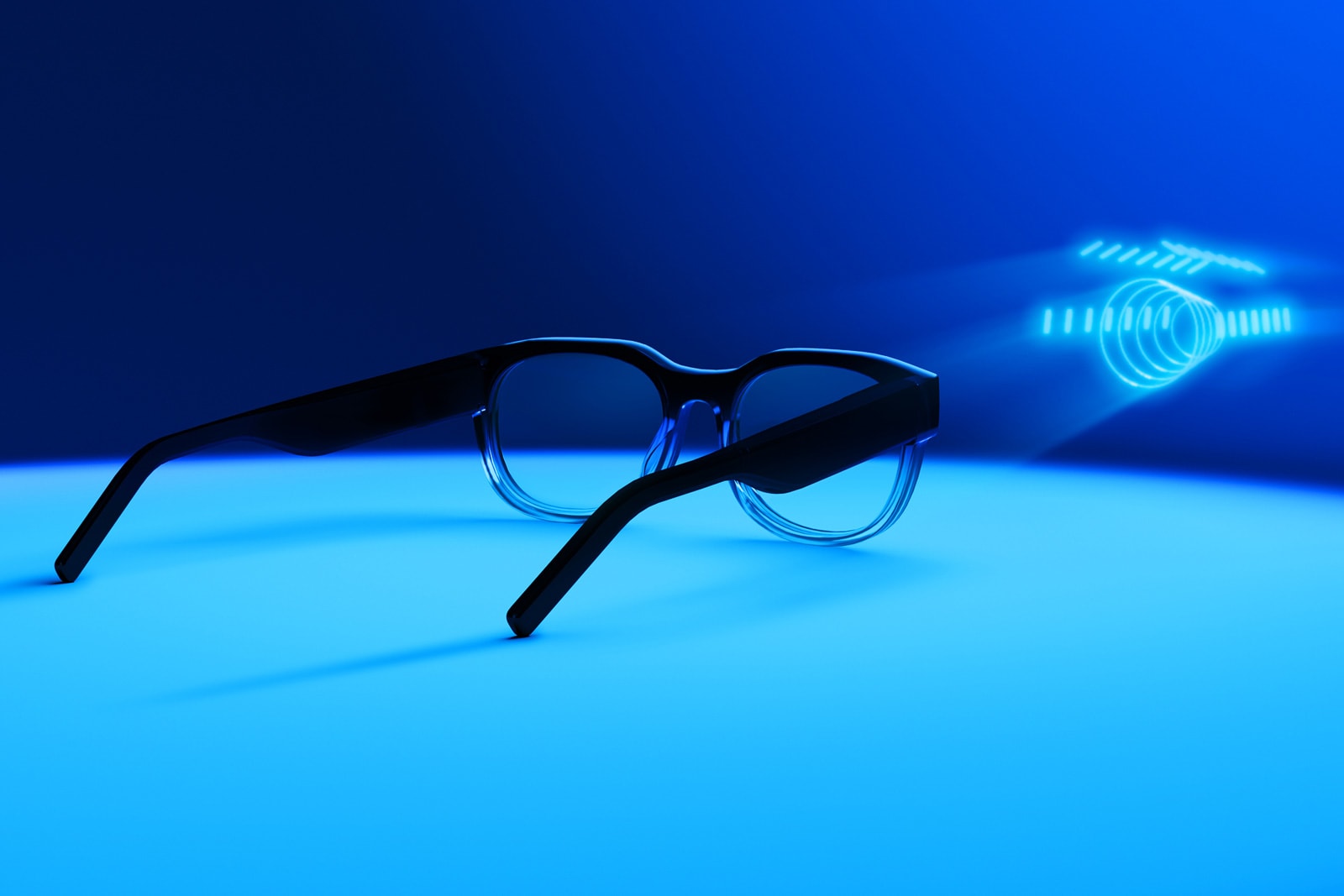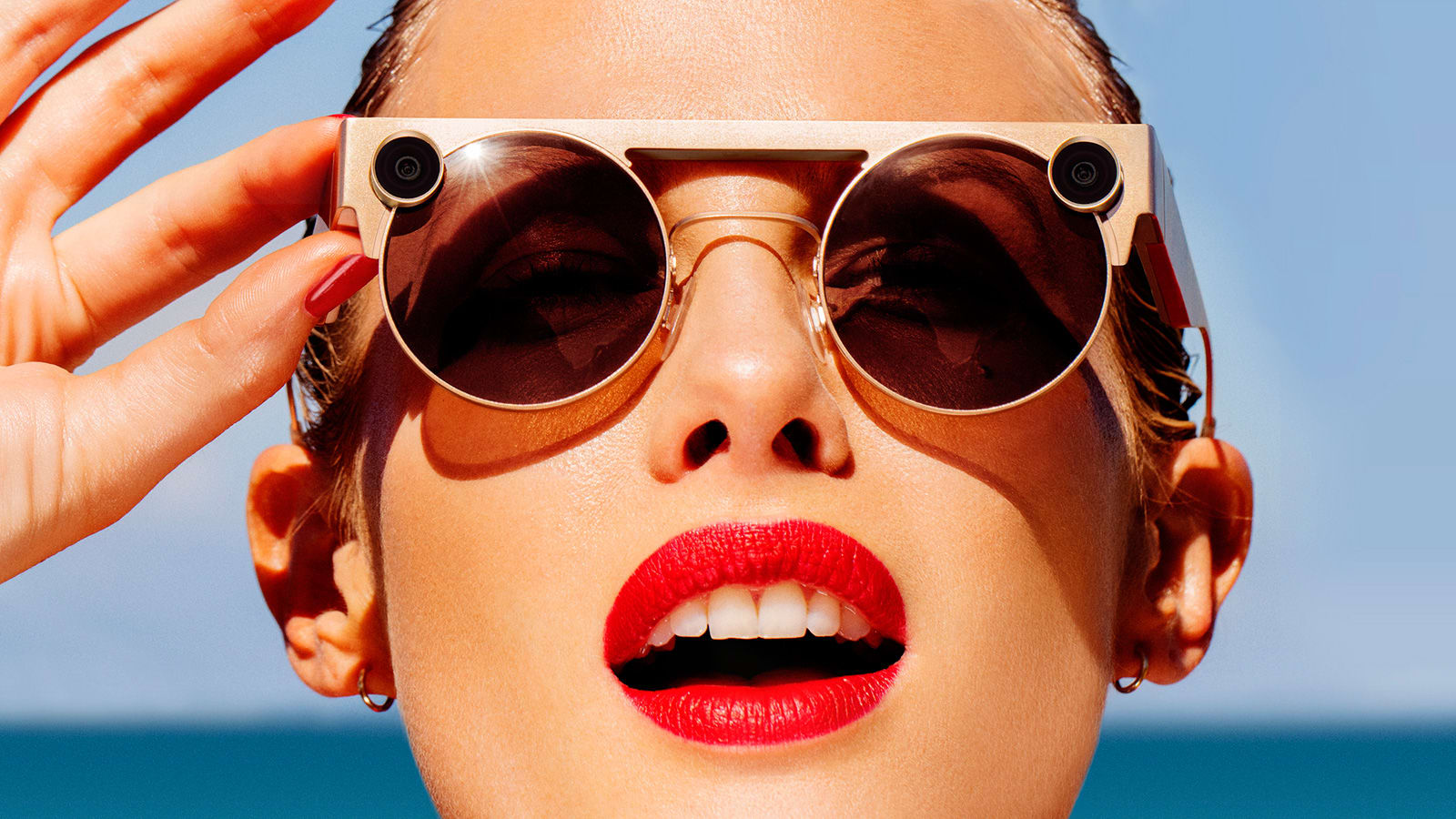The Mutrics GB-30 are a pretty great combination of fashion and function… and that’s always what you want with consumer electronics. Take the AirPods for instance. They’re a style statement, and people who use them would argue they’re some of the best wireless earbuds on the market. Following that design mantra are the Mutrics GB-30, a pair of retro-chic glasses with bone-conduction earphones built into them, inspired heavily (and even named after) the GameBoy – a design theme chosen specifically for the GB-30’s core demographic. Gamers.
Outwardly, the Mutrics GB-30 are a pair of really cool, chunky, vintage-gaming-inspired glasses. On the inside, however, the sleek glasses are fitted with open-ear audio drivers, or bone-conducting earphones that provide a private audio-listening experience, especially for gamers, without the need for a cumbersome pair of gaming headphones. The GB-30’s open-ear audio drivers are arguably perfect for gaming. Whether you’re on Twitch, streaming your kill-streak or on the subway with your Nintendo Switch, the GB-30 are a pretty voguish way to listen to gameplay audio, while the open-ear technology means you can hear stuff around you too. The drivers are calibrated to deliver rich, directional sound so you can listen to and identify where a gunshot is coming from, or dialogues from a non-playable character. The smart-wearable’s gamer-friendly design extends to the glasses too, by equipping you with blue-light blocking lenses that allow you to game for longer without the visual strain.
By far one of the GB-30’s most eye-catching design details is the presence of the GameBoy-inspired control panel on its right-temple-stem. Designed to work in tandem with your phone or Bluetooth device, the buttons can help you increase or decrease volume, play-pause audio, accept or reject calls, and even summon your phone/tablet’s voice assistant on command. Designed much like the kind of sunglasses you’d see from brands like Zungle, the GB-30 works equally well with your phone, providing a great music/podcast listening experience, as well as with your gaming device, delivering rich gameplay audio, while protecting your eyes as you play away. The GB-30 is certified IP55 water and dust-proof, and comes with 4 hours of play-time on a full charge – features that avid gamers will appreciate along with the GB-30’s undeniably retro-hipster design that is sure to put it on every gamer’s wish list!
Designer: Mutrics
Click Here to Buy Now: $99 $199 (50% off) Hurry! Only 60 hours left!
Click Here to Buy Now: $99 $199 (50% off) Hurry! Only 60 hours left!














 North only made its smart glasses widely available in September, but it's already thinking of the future. The Canadian wearable tech maker has revealed that it's releasing its next-gen eyewear, Focals 2.0, sometime in 2020. It's not saying much abo...
North only made its smart glasses widely available in September, but it's already thinking of the future. The Canadian wearable tech maker has revealed that it's releasing its next-gen eyewear, Focals 2.0, sometime in 2020. It's not saying much abo...
 The drum beat for an Apple augmented reality headset is growing louder. Bloomberg claims Apple has "targeted" a 2020 release for its AR eyewear, echoing analyst Ming-Chi Kuo's expectations based on his own sources. The publication also shares a belie...
The drum beat for an Apple augmented reality headset is growing louder. Bloomberg claims Apple has "targeted" a 2020 release for its AR eyewear, echoing analyst Ming-Chi Kuo's expectations based on his own sources. The publication also shares a belie...
 One of the greatest obstacles to buying North's smart glasses has simply been to find them. They've only been available at the company's Brooklyn and Toronto flagship stores as well as its pop-ups, which isn't much help to, well, most people. You mig...
One of the greatest obstacles to buying North's smart glasses has simply been to find them. They've only been available at the company's Brooklyn and Toronto flagship stores as well as its pop-ups, which isn't much help to, well, most people. You mig...
 Apple might not be the only big tech company working on an augmented reality headset. CNBC sources maintain that Facebook is partnering with Luxottica (owner of Ray-Ban, Oakley and other brands) on AR glasses nicknamed Orion. The eyewear would be a...
Apple might not be the only big tech company working on an augmented reality headset. CNBC sources maintain that Facebook is partnering with Luxottica (owner of Ray-Ban, Oakley and other brands) on AR glasses nicknamed Orion. The eyewear would be a...

 Snap's Spectacles 2 were functionally better, but not a revolution -- and they were still a bit dowdy. Its latest attempt at smart eyewear might fare better, though. The social service has unveiled Spectacles 3 glasses that include dual HD cameras...
Snap's Spectacles 2 were functionally better, but not a revolution -- and they were still a bit dowdy. Its latest attempt at smart eyewear might fare better, though. The social service has unveiled Spectacles 3 glasses that include dual HD cameras...
 Researchers at Stanford University have created glasses that track your eyes and automatically focus on whatever you're looking at. The so-called autofocals, detailed in a paper published in the journal Science Advances, could prove a better solution...
Researchers at Stanford University have created glasses that track your eyes and automatically focus on whatever you're looking at. The so-called autofocals, detailed in a paper published in the journal Science Advances, could prove a better solution...
